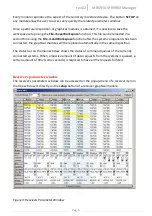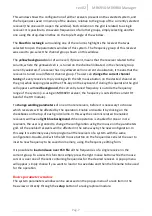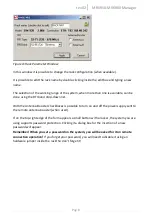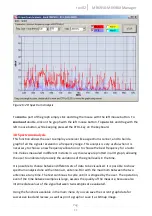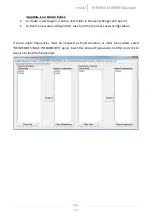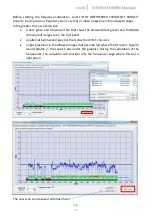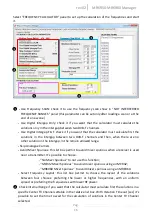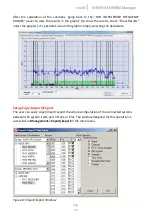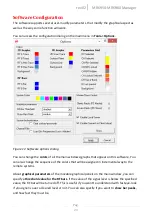
rev02
MRK950-MRK960 Manager
Pag.
20
Saving & Reloading scenes
A scene is receivers configuration stored along network
structure
and
names
.
For example, let say that 4 Mrk950s are linked together through theirs USB daisy chains and
you access the last receiver with USB or network interface.
In this case the system is seen together as 8 channel rack and this system is also identified by
the rack name (that is the name associated to the last MRK950 on the chain).
In this example the structure of the system is 4 MRK950 rack and this is identified by last
MRK950's name (not that you can setup the then name on the
rack parameters windows
).
Of course more complex structures are allowed (ie.many rack of 4 MRK950's and MRK920's).
On your system is setup correctly you have to name properly all rack sets using the rack
parameters windows (ie. first 4 MRK950 rack in main studio named
"main"
, 2 MRK950 rack in
the lobby named
"lobby"
). Once again for each rack this name is associated to the last
MRK950 which is the master, and the information about the structure and all parameters are
stored matching those names!.
You can access the scene save dialog box on the main menu in
File->Save Scene
Figure 9: Save scene dialog box
On save frequency data pop-up menu us can chose among:
no frequency data
-> saving for each receiver current group and channel, along with
other advanced setups (like squelch, data mode).
Since this in not saving frequency tables, this is the quickest mode!
only selected group
--> saving for each receiver current group and channel and the
current selected group, along with other advanced setups (like squelch, data mode).
This mode is saving the frequency tables but only on groups (50 frequencies)
associated to used frequencies.

